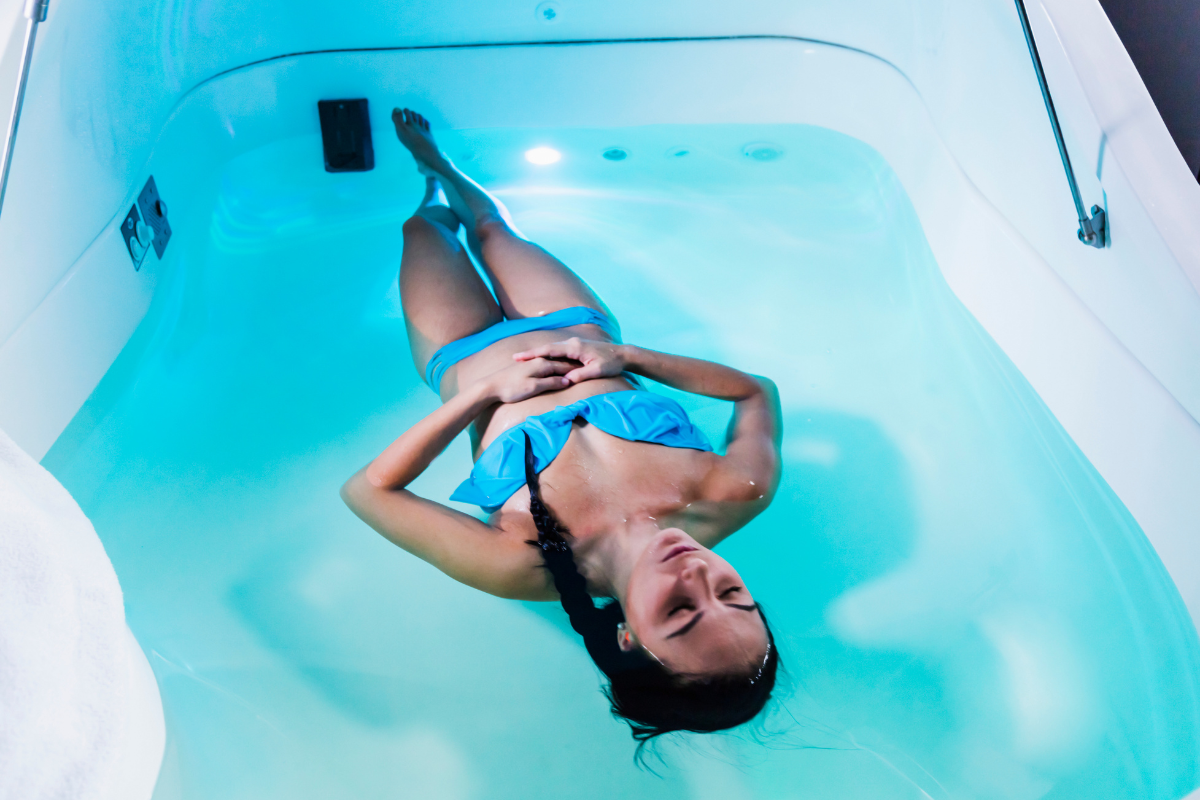A Deep Dive Into Flotation Tank To Get Some REST
Floatation tanks have become very popular over the last couple of years. Many people have made the claim that by floating inside a float tank in a meditation-like state, you can improve your circulation and mental health.
A flotation tank- also known as a “sensory deprivation tank” - is used for restricted environmental stimulation therapy - REST. It is a lightproof, soundproof tank filled with salty water. The saltines imitates the saltiness of the sea and human blood.
It is a near- zero-gravity environment that allows the mind and body to fully let go, relax, and reset. Using Epsom Salts, the buoyancy of the water makes floating on water feel like floating in space. By lowering the force of gravity pull on the musculoskeletal and nervous systems, participants can effortlessly relieve pain and relax. This can help in tissue and whole body recovery, as well as aid in improving sleep.
Flotation therapy offers relief and benefits which are cumulative—they build on themselves with each subsequent session. People who do it often claim that the more you float, the better it gets. Though flotation is an effortless therapy, the body and mind actually learn how to relax into the float with each session. Stress, tension, and pain have formed over time and will take some time to experience the greatest relief—luckily, floating is a relaxing, fun, and effortless way to do so!

The Origins Of The Idea
The first tank was designed in 1954 by John C. Lilly, an American physician, and neuroscientist. He designed the tank with the idea to study the origins of consciousness by cutting off all external stimuli. In the 1970s, commercial float tanks were created and began being studied for possible health benefits. These days, finding a sensory deprivation tank is easy, with float centers and spas offering float therapy all over the world.
Their increase in popularity may be due in part to the scientific evidence. Studies indicate that time spent floating in a sensory deprivation tank may have some benefits in healthy people, such as muscle relaxation, better sleep, decrease in pain, and decreased stress and anxiety.
Low-Gravity, Totally Silent, And Pitch-Black
The water in a sensory deprivation tank is heated to skin temperature and nearly saturated with Epsom salt (magnesium sulfate), providing buoyancy so you float more easily. You enter the tank nude and are cut off from all outside stimulation, including sound, sight, and gravity when the tank’s lid or door is closed. As you float weightlessly in the silence and darkness, the brain is supposed to enter into a deeply relaxed state. Sensory deprivation tank therapy is said to produce several different effects on the brain, ranging from hallucinations to enhanced creativity.
As you might imagine, being in a low-gravity, totally silent, and pitch-black floatation tank gives the body time to relax. While the healing benefits of relaxation have long been documented, the intense relaxation of floatation therapy is unique to the low-gravity environment that the floatation tank provides. This environment leads to more profound relaxation and allows our bodies to recuperate faster and more thoroughly.
What Are The Benefits Of REST?
The near-weightless environment of floating allows for the muscles and joints of the body to relax, increasing blood flow and helping to more quickly repair muscle tissues and heal the body. This is especially beneficial for those with injuries or chronic pain.
Being in a low-gravity, totally silent, and pitch black environment gives the mind time to relax as well. This mental release is almost the opposite of stress and allows the brain to stop allocating its resources to processing the experience of all of our senses, producing profoundly positive mental effects and releasing a surge of positive neurochemicals. Studies have shown the use of floatation therapy to be extremely beneficial for relaxation and mental health.
The lack of external stimuli is extremely rare in modern society. In the floatation environment, without the hustle and bustle of the world imposing itself, people experience a profound calmness of mind. This respite from the world allows for stress management, offers the psychological benefits of a feeling of inner peace, and is a perfect complement to many alternative well-ness regimens.
The Altered States Of Consciousness
Some people are also worried about experiencing altered states of consciousness while in the tank. Most people will experience profound relaxation and have altered time perception, but some may even have out-of-body experiences.
Some have found these unexpected states to be positive. In a study, participants who experienced altered states of consciousness while in the tank were also more likely to become more mindful in their daily lives.
However, these experiences may not be for everyone. If that’s the case, you should not use a float tank.
Can Everybody Use Flotation Tanks?
When used correctly, a sensory deprivation tank can help reduce stress and ease muscle tension and pain. It can also help enhance your mood. Sensory deprivation tanks are generally considered safe, but it may be a good idea to speak to a doctor before using one if you have any medical conditions or concerns.
Shaving or waxing one's body before a session is not recommended as the salt in the water can irritate the skin.
Women who are menstruating should skip and reschedule their sessions once their period has ended.





